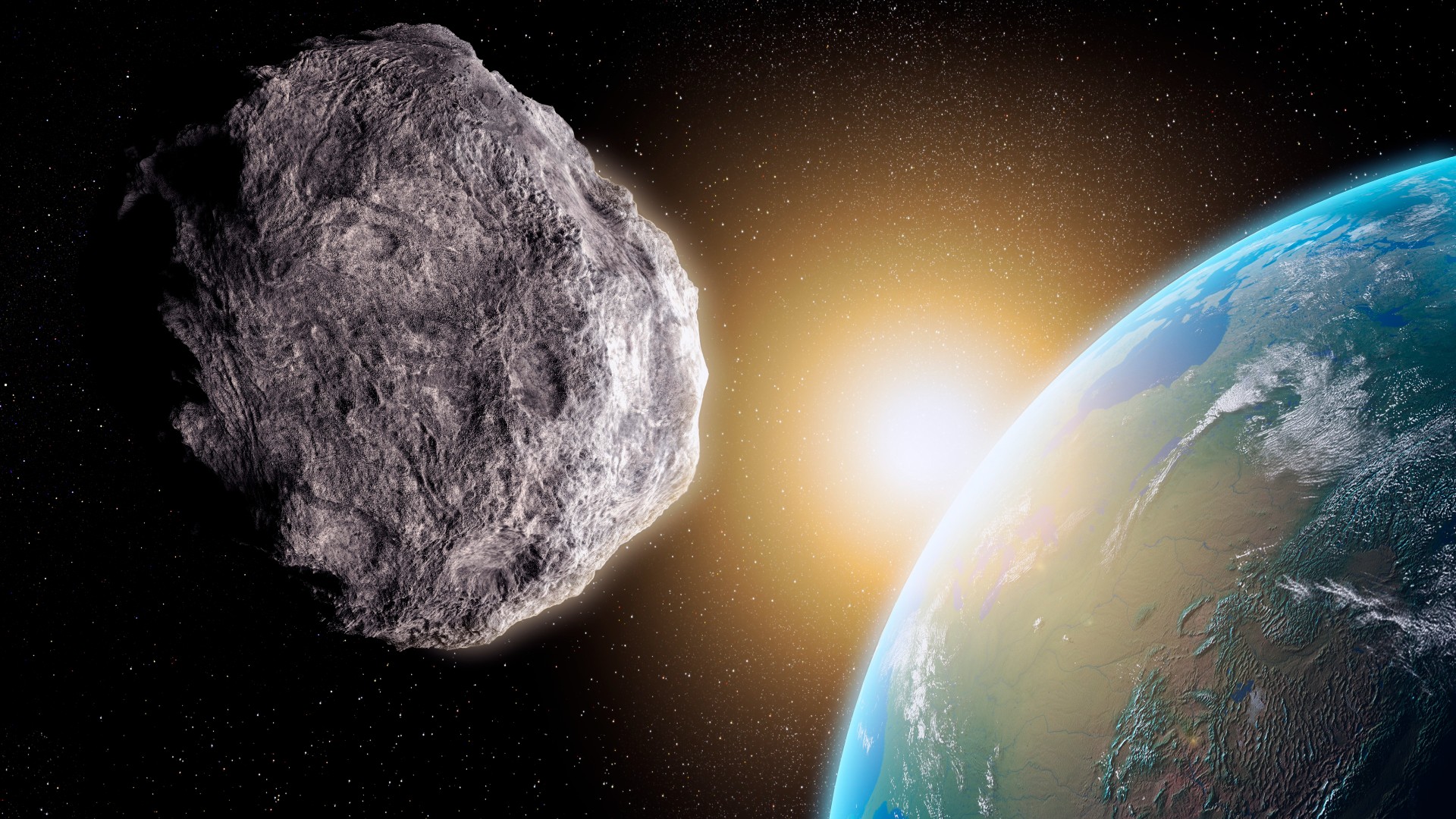Scientists just detected a bus-sized asteroid that will fly extremely close to Earth tonight
Asteroid 2022 NF will pass within 23% of the moon’s average distance.

A small asteroid the size of a bus will make an extremely close approach to Earth on Thursday (July 7), passing within just 56,000 miles (90,000 kilometers) — or about 23% of the average distance between Earth and the moon. And just a few days ago, no one knew it was coming
The asteroid, named 2022 NF, is expected to pass safely by our planet, according to calculations by NASA's Jet Propulsion Laboratory in Pasadena, California.
Astronomers discovered the sneaky asteroid using data from the Panoramic Survey Telescope and Rapid Response System (Pan-STARRS) — a system of cameras and telescopes based in Hawaii with the primary goal of detecting near-Earth objects, or NEOs. On July 4, researchers identified the object and calculated its approximate size and trajectory, estimating that the space rock measured between 18 and 41 feet wide (5.5 meters and 12.5 meters) at its longest dimension.
Related: Why are asteroids such weird shapes?
Because of its diminutive size, 2022 NF does not fit NASA's criteria for a "potentially hazardous asteroid," which generally must measure at least 460 feet (140 meters) long and pass within 4.6 million miles (7.5 million km) of Earth, according to Live Science's sister site Space.com. While the newly detected asteroid will sail well within that distance, it is much too small to be considered an existential threat to Earth.
Though the asteroid makes its closest approach to Earth on July 7, it will be visible to some telescopes beginning on Wednesday (July 6); the Virtual Telescope Project will livestream the asteroid's flyby from their telescope in Rome, beginning at 4 p.m. EDT (08:00 UTC). You can join in by clicking over to the Virtual Telescope Project's website here.
NASA and other space agencies closely monitor thousands of NEOs like this one. Rarely do they pose a threat to Earth — but, some large asteroids could prove dangerous if their trajectories should happen to change.
Get the world’s most fascinating discoveries delivered straight to your inbox.
In November 2021, NASA launched an asteroid-deflecting spacecraft called the Double Asteroid Redirection Test (DART), which will slam head-on into the 525-foot-wide (160 m) Dimorphos asteroid in autumn 2022. The collision will not destroy the asteroid, but it may change the space rock's orbital path slightly, Live Science previously reported. The mission will help test the viability of asteroid deflection, should some future asteroid pose an imminent threat to our planet.
Originally published on Live Science.

Brandon is the space / physics editor at Live Science. With more than 20 years of editorial experience, his writing has appeared in The Washington Post, Reader's Digest, CBS.com, the Richard Dawkins Foundation website and other outlets. He holds a bachelor's degree in creative writing from the University of Arizona, with minors in journalism and media arts. His interests include black holes, asteroids and comets, and the search for extraterrestrial life.
